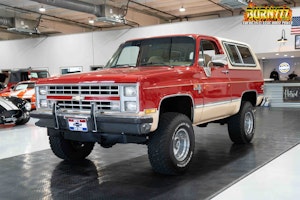Media | Articles
Vee is for Victory
How the bumbling, beloved VW Beetle spawned one of the most exciting and affordable classes in racing – Formula Vee.
What do you get when you cross Herbie the Love Bug with a cigar tube? Easy – a 1963-1990s era Formula Vee open wheeler. Equipped with a Volkswagen Beetle engine, transmission, suspension, steering and brakes fitted into a specialty tube frame and body, this popular class put thousands of drivers into formula-car racing for cheap starting more than 50 years ago. And the good news is they are still viable and cost-effective racecars today. Even $3,500 can get you into a turnkey car, and double that for a good used car with spare wheels, gearboxes and engines. Credit-card money!
Eligible in vintage racing organizations such as Sportscar Vintage Racing Association (SVRA) and Vintage Auto Racing Association (VARA), the cars also remain relevant in Sports Car Club of America (SCCA) racing nationwide. Grids can range from a handful of cars to dozens at major events, proving that even a half-century later, Formula Vee means terrific competition on a budget. Early chassis builders included Zink, Caldwell, Lynx, FormCar and others. Likely thousands were built, with hundreds still in use today.
Driver Skill, Not Overkill
Obviously, there are no doors on a Formula Vee, which stands knee high to a caterpillar. You step over the bodyside, stand on the seat, and then slip inside, as if entering a tunnel. If you’re claustrophobic, you may instantly feel panic. But starting the engine and rolling onto the track, the immediate sense is mechanically Volkswagen, but a racer at heart. Steering response is instantaneous, and with cornering forces approaching 1.5 Gs, driver skill is key.
Marketplace
Buy and sell classics with confidence
Californians Randy and Dolores Wilson have owned several small-bore vintage racecars including an F Production Morgan 4/4, an E Production MG Midget and a Formula Vee Zink. “The stock 40-horsepower engine is race prepped to about 56 horsepower, but because the basic car weighs only 850 pounds it’s quicker than our Midget,” Randy says. “The secret to driving a Formula Vee fast is maintaining momentum – because there’s so little power, you want keep the throttle open and brake as little as possible.” In other words, bravery counts.
Seriously Cheap Competition
Wisconsin’s Bruce Livermore began Formula Vee racing in 1995, and can vouch for the competitiveness of the class. “When I got the Vee I was concerned that it would not be fast enough, but the close competition completely swamps the need for a huge amount of speed,” he explains. “For instance, there were over 70 cars entered at the Formula Vee 50th birthday-party race at Road America in 2003. I fought all race long over 10th place and it was one of the most intense races I’ve ever been in!”
Livermore added that if he was looking for a Formula Vee to buy today, he would ask about recent race usage and finishes, find some references and get an expert’s opinion. “You also have to sit in the car and make sure you fit,” he adds. “Some are so small, that some people don’t!”
If you’re at all intrigued (as I am!), visit www.formulavee.us for a starter dose of excitement. Look for the “How can I get started?” link.
20170725095245)









